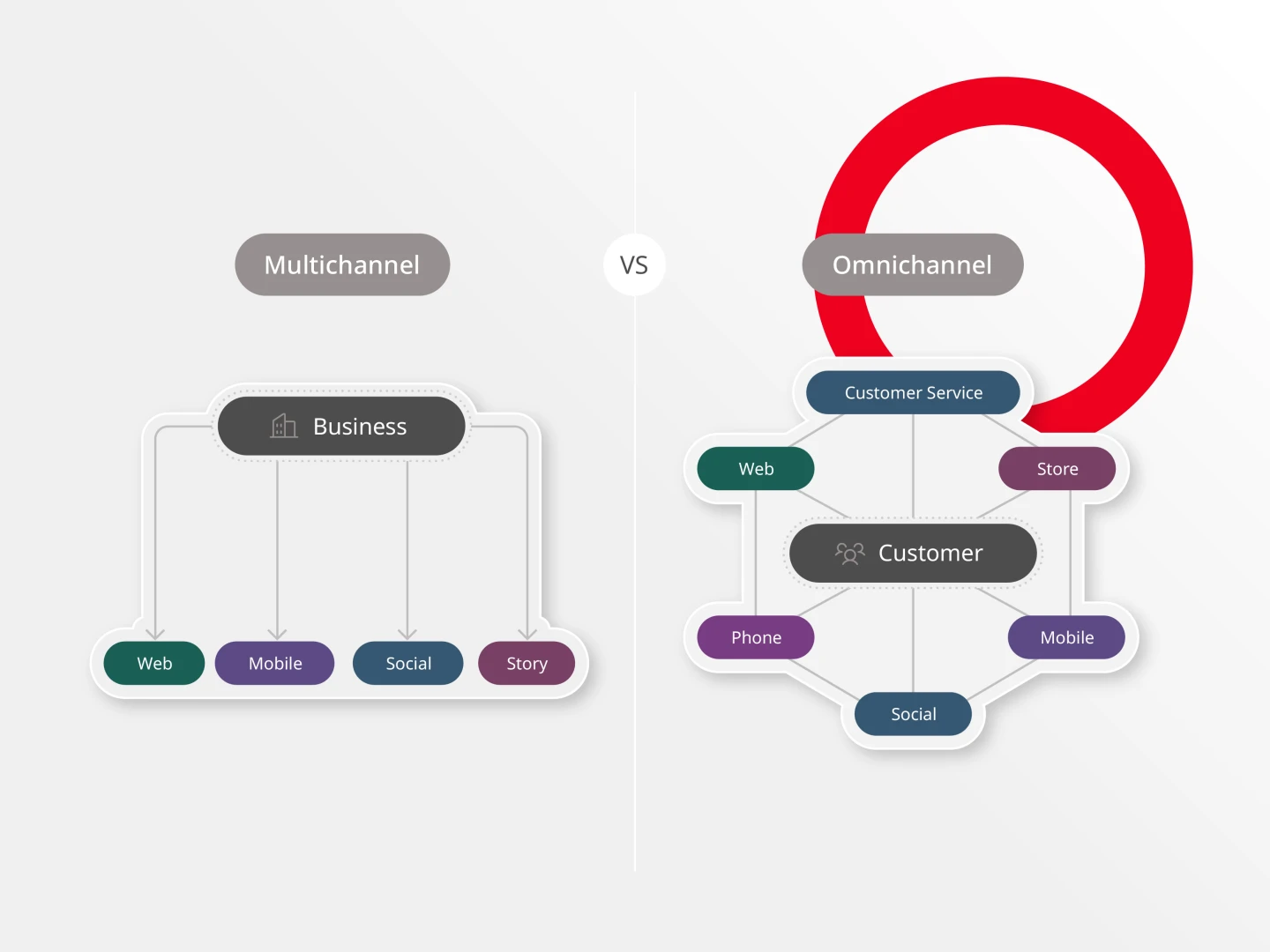What is omnichannel marketing?
Omnichannel marketing is defined as a marketing tactic that aligns content delivery across channels. Omnichannel marketing aims to provide a seamless and consistent experiences throughout a customer’s journey.
What is a channel? Think digital, radio, television, print media. For a retail brand, this could also be a physical outlet like a retail store or bank branch.
Previously publishers may have only had to consider print and broadcast media. Now the digital media landscape extends to visual, audio and even back into print mediums. Physical brick-and-mortar stores must continue to run those businesses while also attracting an entirely virtual, click-and-buy clientele. Meanwhile marketers must be nimble as to how they are reaching their customers.
These days, customers are no longer confined to a single channel or platform for interaction with a brand. Omnichannel marketing is intended to accommodate this shift in behavior.
For example, a user might begin reading a news story on a smartphone and finish it later at a desktop computer. The publisher must deliver the same experience on each device at the unique times the customer accesses them.
For an omnichannel marketer, success means using the right channels, optimizing well, and ensuring consistency and personalization.
Specifically, you need to know where and how your customers are engaging with your brand and messaging. The messaging needs to tailored to the device or delivery format. And, if possible, the experience needs to be unique to the moment and the person.
The best omnichannel experiences will make all this seem seamless and dynamic. Of course, the technology behind it all is incredibly sophisticated. The system will leverage data, machine learning and artificial intelligence to power everything from geospatial awareness to personalized recommendations. More on the need for a good content management system (CMS) to power the omnichannel journey later.
Omnichannel marketing versus multichannel marketing
Like omnichannel, multichannel marketing aims to communicate through as many channels as possible, such as mobile and web. However, with multichannel, brands have individual objectives and metrics for each channel. In many cases, they function independent of each other.
For instance, a company may share blog content on web and mobile. However, there might not be a consistent, optimized experience between the two. Multichannel marketing gives the customer control of how they want to engage. Omnichannel ensures that whichever channel a customer uses, the brand will engage with them there.
The value of omnichannel is growing. A CX Today study found that nine out of ten consumers want an omnichannel experience across all touchpoints.
This speaks to an expectation that the digital experience is fluid. This expectation has only increased during COVID-19. We spend more time in front of our screens and have a greater need for online information than ever before.
Omnichannel is also paying dividends for brands, as a 2019 survey by ClickZ found. Customers who interacted with three or more channels purchased 250% more often than those who only interacted with one.
One specific area that helps illustrate the importance of an omnichannel approach over a multichannel focus is eCommerce. A customer is looking for an item of clothing and will likely consider multiple options. They will conduct this search across multiple screens before making a decision. The eCommerce seller may also have a physical retail presence, creating another channel through which the customer may engage.
Each of these channels represents an opportunity but also a challenge. They are different touchpoints within the customer journey. But throughout, the focus needs to be on the shopper, not the device or location.
A successful omnichannel marketing strategy will inform the user experience irrespective of channel. A channel-agnostic approach meets the user where they are in the customer journey, not just the device they are using. It then enables marketers to leverage data and insights to customize that experience.
The role of a CMS in an omnichannel content strategy
A great CMS is key to success with omnichannel marketing. It allows you to store all content in a central location for omnichannel publishing. It is also the heart of the integration capabilities that allow you to serve the right content to your audience.
Brightspot is designed with native omnichannel capabilities that make it simple to create, optimize and distribute content from one place. An intuitive back-end experience makes it seamless to manage different channels and customer journeys.
Once a company gets its omnichannel strategy in place, personalizing the content delivered across channels is the next step. Brightspot’s technology is also designed to make this personalization simple.
One of the challenges of omnichannel marketing is seamlessly repurposing content from a CMS to fit different channels. To avoid this pitfall, publishers need a modern platform that integrates all channels in one.
On the technical side, a headless or decoupled CMS can be particularly helpful. Why? This solution will give publishers greater flexibility and enabling them to push content to any device.
A headless or decoupled CMS offers a way to separate the back-end system from the front-end experience. For the user the information and experience remains consistent whether browsing a website, using an app or accessing a wearable device.
Brightspot integrations enhance omnichannel delivery
As we see above, Brightspot’s CMS helps with omnichannel marketing by serving as the content hub. Marketers also need to leverage a variety of technologies to create a full omnichannel experience.
Brightspot provides easy integration and pre-built connectors with other parts of the marketing ecosystem. These integration tools include marketing automation software, paywall providers and advertising networks.
For instance, one integration might enhance the omnichannel experience by offering identity protection to a customer accessing paywalled content. Another could display an eCommerce link for a customer to make a purchase based on profile preferences or browsing history. Integrating with technologies like these helps to provide a seamless customer experience that gives users everything they need. Ultimately, for the brand, it increases the chance for a sale or conversion.
Brightspot’s integrations also make it possible to extend the value of your existing technology. Flexible integrations mean you don’t have to take a rip-and-replace approach every time you want to add new channels.
Multichannel marketing represented a great way to engage with customers on the many channels where they spend time. Marketing is constantly evolving to keep pace with changing customer demands. Omnichannel marketing is the latest evolution that is helping brands and publishers keep pace.
Creating a seamless and relevant omnichannel experience requires being organized with content and connecting various technologies. Brightspot’s solution makes this possible.









